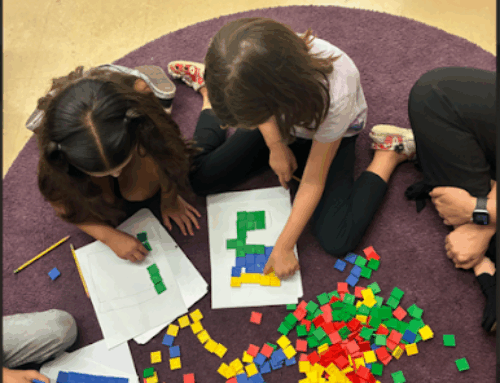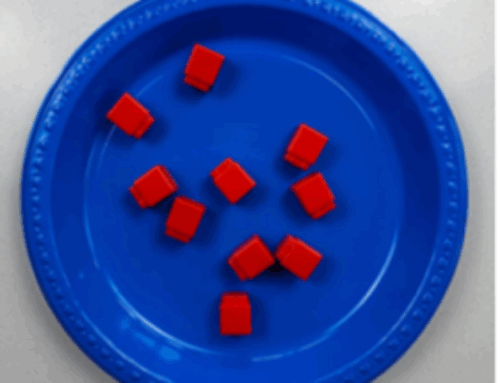Foot Parade! Modeling with Mathematics in Grades K-2

Rusty Bresser
How many feet are in a foot parade that has 3 snails, a ladybug, a moose, and an octopus? How about the number of feet in a foot parade with 5 ostriches? Or a parade with an ostrich and a moose? How would you represent these parades using mathematics?
These are the kinds of questions posed in a gem of a lesson I recently found on Jo Boaler’s YouCubed, a resource from Stanford University. If you’re interested in a math activity that’s engaging, creative, evokes curiosity, and helps children represent real-life situations with math models, then Foot Parade is for you.
Foot Parade not only addresses key content and practice standards in kindergarten and first grade, but it can also serve to differentiate instruction, meeting students wherever they are in their math development. For second graders, Foot Parade offers a challenging problem-solving experience, building on the idea of making 10 in different ways.
In this post, we’ll take you into a kindergarten and a second-grade classroom and look at how young children create Foot Parades of their own while modeling with mathematics, one of the Common Core Standards for Mathematical Practice.
Foot Parades in Kindergarten
Having taught kindergarten, I now have the utmost respect for those teachers who feel at home with five-year-olds. One of those teachers is my friend and colleague Frannie McKenzie. If you read our post Ten Apples Up on Top, you are already familiar with her classroom, which I have to say is a magical place.
Preparing for the Lesson
I prepped for the lesson by gathering the following materials:
- 1 Foot Parade Poster
- Set of 16 cut out animal cards for each student
- Glue stick, one per student
- Crayons
- Strip of white (or colored) paper per student (long enough for a parade)
Launching the Lesson
Frannie, her student teacher Katilyn, and I each had a role in teaching Foot Parade. I started by launching the lesson, gathering the class on the front rug and showing them the following poster, courtesy of YouCubed. I asked them if any of the animals looked familiar and if they knew their names. We discussed how many feet each animal has, and I wrote that number next to each picture. The kids enjoyed making connections to their experiences. Most were surprised that snails have a foot, let alone just one!
Frannie went next, modeling for the class how to use the animal cards to make a foot parade and an equation to match the number of animal feet.

Exploring
When it was their turn, students had to create a parade that equaled 10 feet. Following are some examples and photos from the classroom.


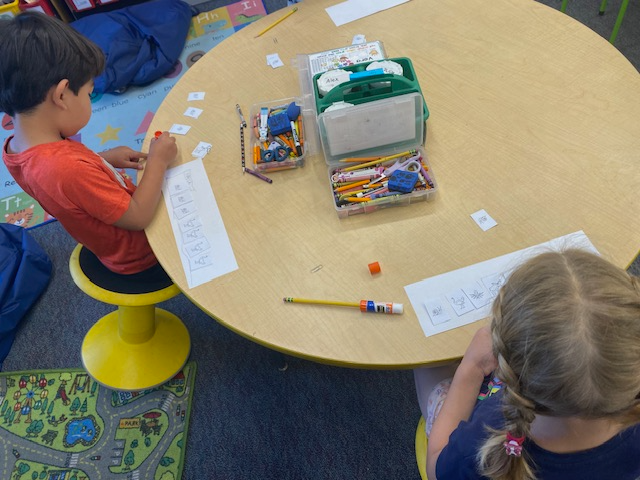

Some students found ways to make 11 feet!

Students were excited to create their parades, and it seemed like the end of the year was the perfect time to share the lesson with kindergartners because it synthesized skills and concepts they had learned during the year. Although all Frannie’s kids were able to create parades that totaled ten feet with accompanying equations, the lesson could easily be differentiated so that students could choose their own target number and engage with Foot Parade as a counting task rather than as an addition lesson
Summarizing.
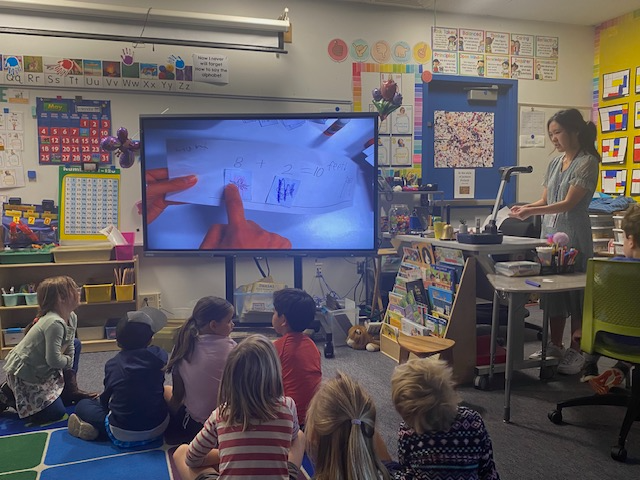 Katilyn, Frannie’s student teacher, summarized the lesson by bringing the class back to the rug and sharing a few pieces of student work. As she showed a student’s parade, Katilyn had the class count the number of feet in the parade, providing students with counting practice as well as exposure to different ways to make ten.
Katilyn, Frannie’s student teacher, summarized the lesson by bringing the class back to the rug and sharing a few pieces of student work. As she showed a student’s parade, Katilyn had the class count the number of feet in the parade, providing students with counting practice as well as exposure to different ways to make ten.
One thing I noticed was how Katilyn modeled the ‘counting on’ strategy. For example, for the equation 8 + 2, Katilyn pointed to the 8 and asked the class how many feet the octopus has. After a chorus of “Eight!” from the students, Katilyn modeled counted on from 8 to get to 10 feet (8, pause…9, 10).
While most kindergartners are still solving problems counting by ones, some are ready to ‘count on’. Counting on is a major milestone in children’s counting and adding development. It requires a student to understand that a number like 8 contains all the numbers preceding it. Hierarchical inclusion, along with other important counting concepts, develops through time and experience with counting objects.
Foot Parades in Second Grade
I also tried out Foot Parade in Lila Murphy’s second grade class. Lila is a friend and colleague and another one of my favorite teachers. Like Frannie’s, Lila’s classes are always a joy to visit.
Lila and I launched the lesson much like Frannie and I did. And just like Frannie’s kindergartners, the second graders each had a deck of animal cards. But for this version of the lesson, the second graders had to create as many different parades as they could find that total 10 feet, modeling each with an equation.
This task was a bit more challenging than the kindergarten version. Second graders had to think critically as they engaged in problem solving. I noticed some scanning their equations, keeping track of the parades they’d made so as not to repeat any. Others moved their animal cards around in a trial and error fashion as they found new ways to make parades. The students loved this challenge and were completely engaged for over a half-hour before we called them back to the rug.
Finding Different Parade Combinations
Students found many ways to make parades that totaled 10 feet. The photo below shows Lila’s class using their animal cards to create animal parades.
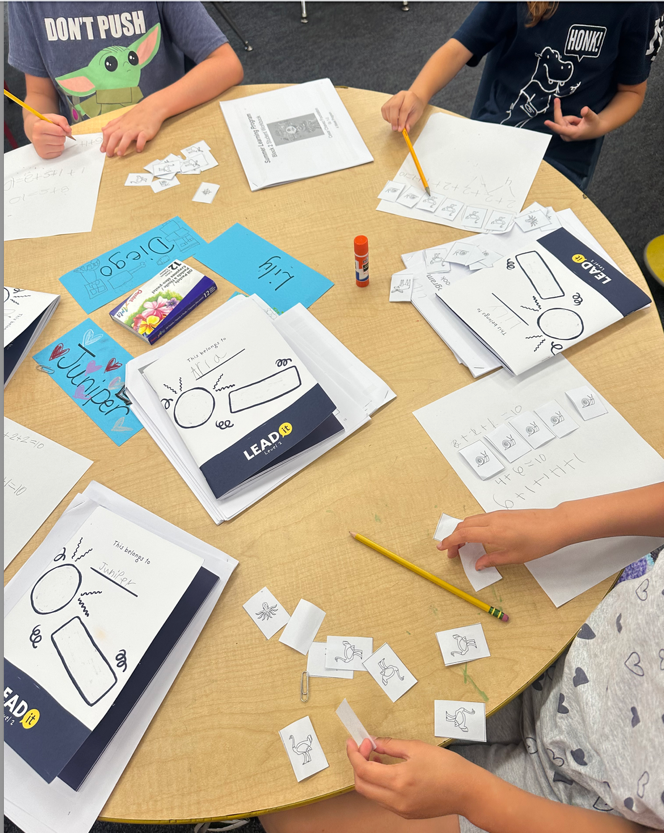

Bardia found 11 ways (not including one error). At one point he came up to me and asked, “Can we use the commutative property? Like, do 8+2 and 2+8 count as different ways?” I was really impressed with his question, to which I responded, “8+2 and 2+8 count as one way.” I could tell by the look on his face that he was slightly disappointed, but he quickly returned to his seat, eager to keep going. This was a combination problem, where the order of the addends doesn’t matter, unlike a permutation problem, where order does matter.
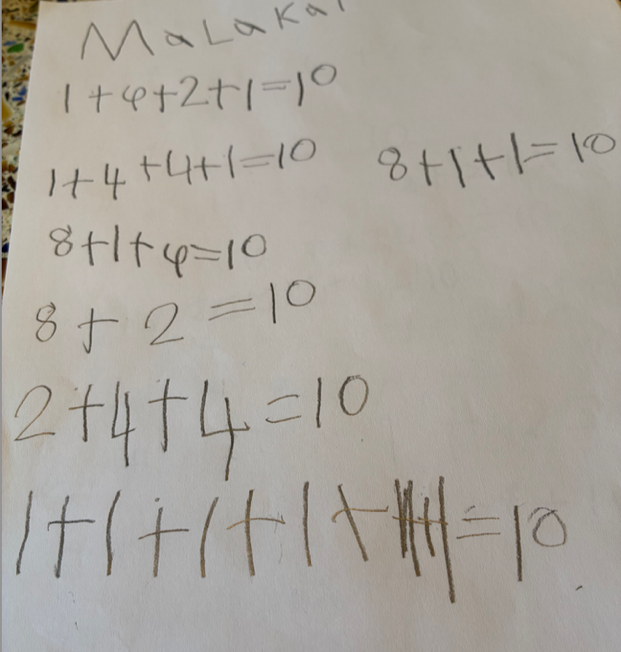 Malakai found 6 different ways (not including one error) to make a parade with 10 feet. The challenge for students was to find as many ways as they could to make parades of 10 feet, not necessarily to find all the ways. This opened and differentiated the task, allowing everyone to feel successful and challenged. The animal cards served as visual support for everyone but particularly those who might otherwise struggle. This version of Foot Parade seemed perfect for second graders because it provided them with a robust challenge, while also giving them practice representing problems involving addition.
Malakai found 6 different ways (not including one error) to make a parade with 10 feet. The challenge for students was to find as many ways as they could to make parades of 10 feet, not necessarily to find all the ways. This opened and differentiated the task, allowing everyone to feel successful and challenged. The animal cards served as visual support for everyone but particularly those who might otherwise struggle. This version of Foot Parade seemed perfect for second graders because it provided them with a robust challenge, while also giving them practice representing problems involving addition.
If you’re curious about how many different parades there are that equal 10 feet, try it out! Notice how you go about solving the problem. Do you make a plan beforehand and use a systematic approach? Or do you create parades through trial and error?
Summarizing the Lesson

To sum things up, we brought the students back to the rug with their papers, and Lila elicited the different equations the class discovered.
After posting the different combinations students found, we sent them back to their seats, each with a glue stick and a piece of colored paper, and students created their favorite parade that equaled 10 feet, just as the kindergartners had done in Frannie’s class. Lila posted these favorite parades as another way for students to see the various parades they had made.
Modeling with Mathematics
Modeling with mathematics is one of the eight Common Core Standards for Mathematical Practice. These practices are important and are the behaviors that mathematicians (and children as mathematicians) exhibit when solving problems. During a rich math task, children often find themselves engaged in several of these practices. In Foot Parade, Frannie (and later Lila with her second graders) foregrounded or focused their teaching on helping students model the animals’ feet using equations.
Because teachers are often focused on the content standards of a lesson, it’s easy to forget to also focus on and encourage students to engage in the math practices. The Rhode Island Department of Education has come up with a chart that describes the math practices in kid-friendly language. Sharing the chart with students can remind and encourage them to use these practices, and it also can help teachers wrap their brains around what the practices look like at their grade level, especially in the primary and elementary grades.
Mathematizing the World
In their research study titled, Mathematizing the World, Aguirre et. al (Journal of Mathematical Behavior, Vol. 76, 2024) describe mathematizing as representing real-life situations with mathematical models such as symbols, pictures or diagrams, objects, numbers, and equations. They say that mathematizing activities like the Foot Parade are “designed to center students’ experiences and ideas, to evoke curiosity, and to invite connections between mathematics and the world.” Foot Parade fits this description, especially since it invites students to create models (equations) to represent the animals’ feet in their parades. It’s a terrific lesson, and we hope you’ll try it out!

